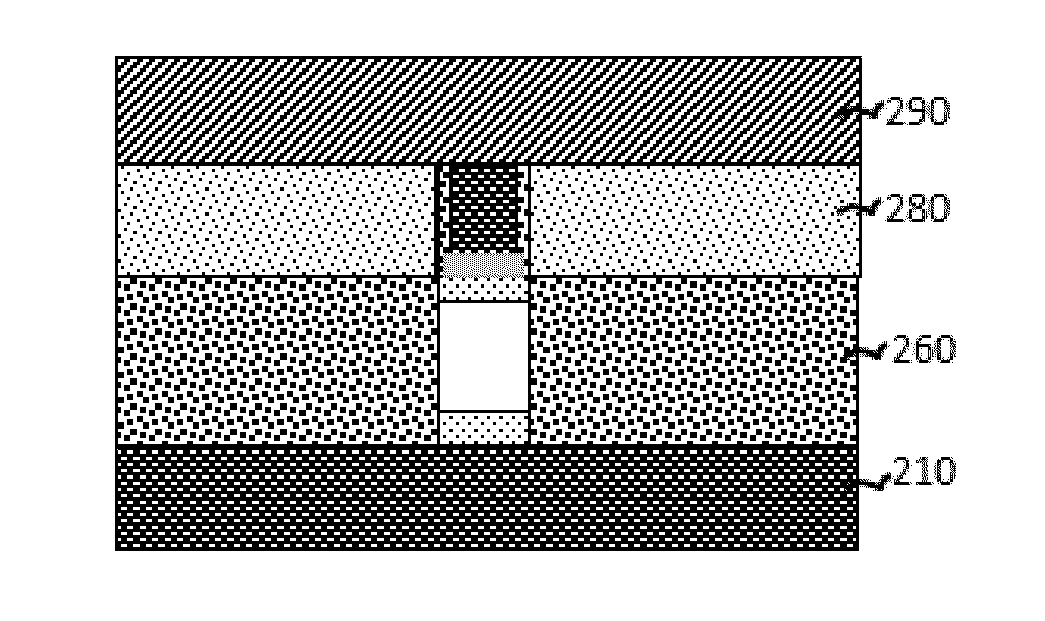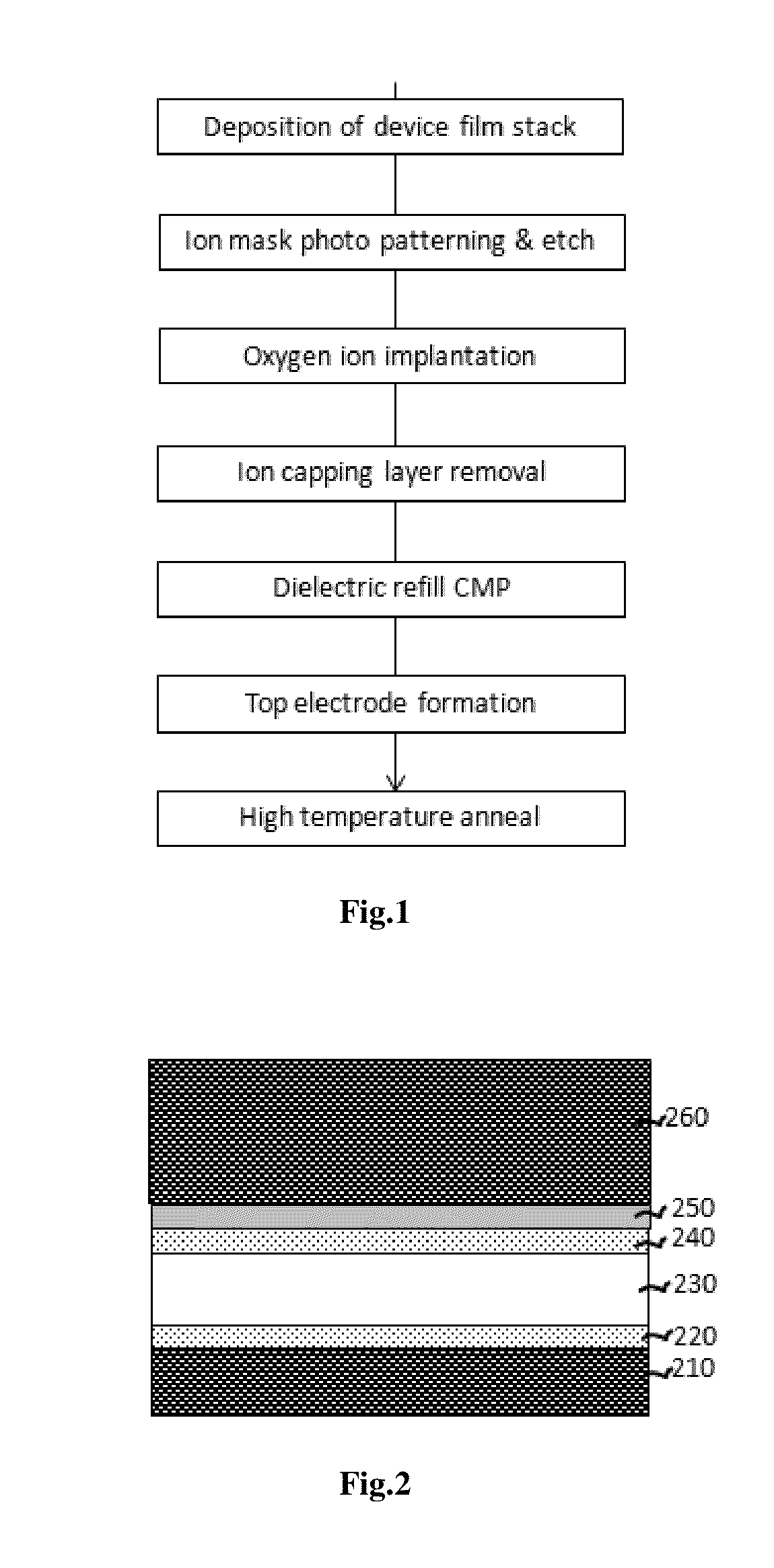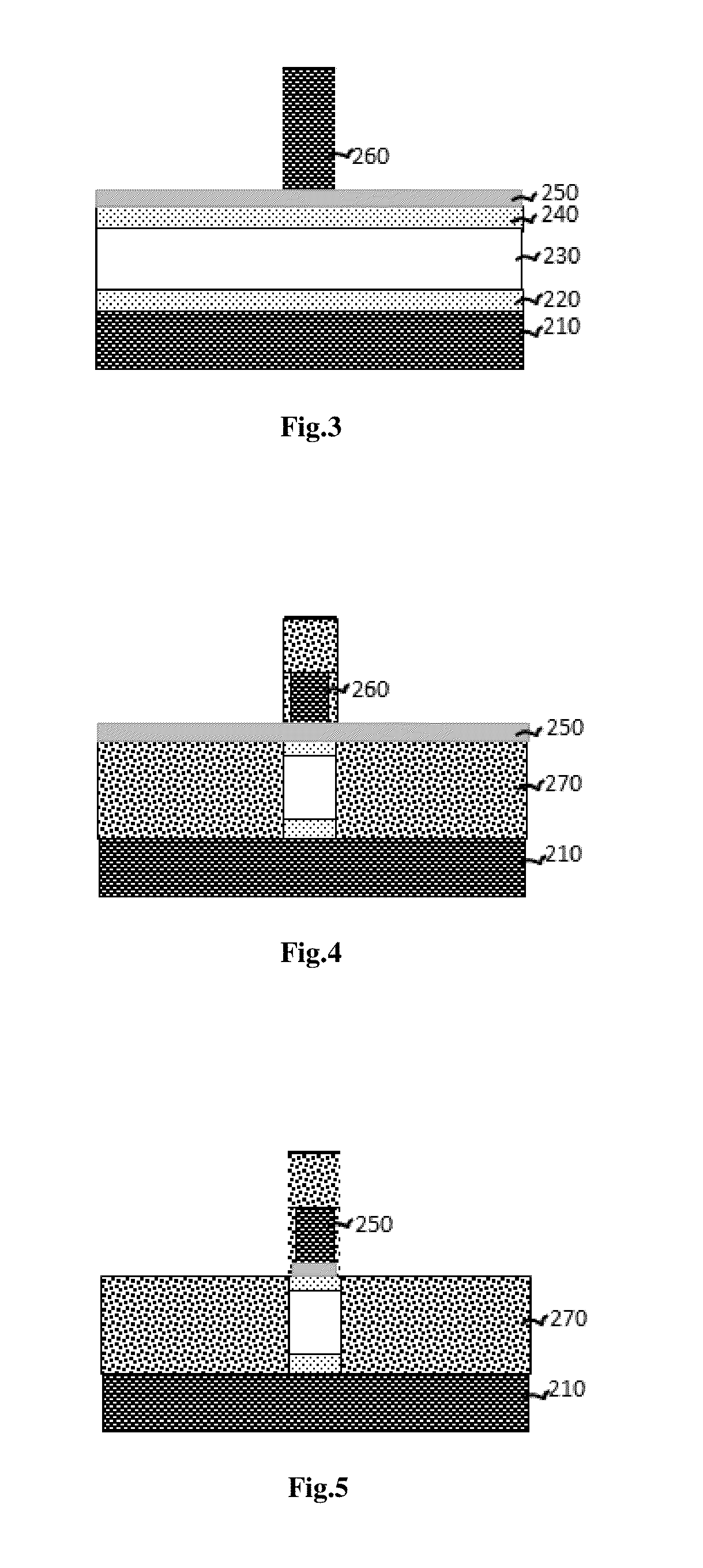Method to make integrated device using oxygen ion implantation
a technology of oxygen ion and integrated device, which is applied in the field of spinelectronic devices, can solve the problems of increasing the cost of increased write current, reducing the write current, and not having enough magnetic crystalline anisotropy to achieve thermally stable perpendicular magnetization, etc., and achieves the effect of effectively capturing oxygen
- Summary
- Abstract
- Description
- Claims
- Application Information
AI Technical Summary
Benefits of technology
Problems solved by technology
Method used
Image
Examples
Embodiment Construction
[0032]Here we use oxygen ion implantation to convert the photolithography exposed areas into metal oxide thus forming an electric insulating dielectric matrix. The process flow is shown in FIG. 1. The first operation is to deposit device film stack on a Si substrate which may already contains CMOS control circuits. In general, the process described here can be used to make any type of integrated devices, such as diodes, FETs, and various RAMs including MRAM. The film (FIG. 2) stack contains several key layers, a bottom ion-stopping layer (210), an oxygen gettering layer (220), a device layer (230) which could contains a series of sub-layers, another oxygen gettering layer (240), an ion-capping layer (250), and an ion-mask layer (260).
[0033]The ion-stopping layer (210) typically contains a heavy metal with large atomic number, selected from Hf, Ta, W, Re, Os, Ir, Pt, Au, with a thickness between 200 A-1000 A. Pt or Au is superior to other materials because of their resistance to oxyg...
PUM
 Login to View More
Login to View More Abstract
Description
Claims
Application Information
 Login to View More
Login to View More - R&D
- Intellectual Property
- Life Sciences
- Materials
- Tech Scout
- Unparalleled Data Quality
- Higher Quality Content
- 60% Fewer Hallucinations
Browse by: Latest US Patents, China's latest patents, Technical Efficacy Thesaurus, Application Domain, Technology Topic, Popular Technical Reports.
© 2025 PatSnap. All rights reserved.Legal|Privacy policy|Modern Slavery Act Transparency Statement|Sitemap|About US| Contact US: help@patsnap.com



